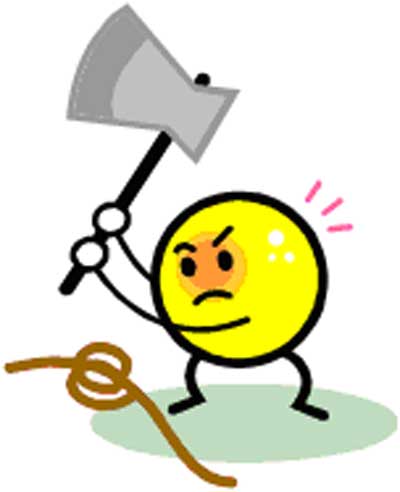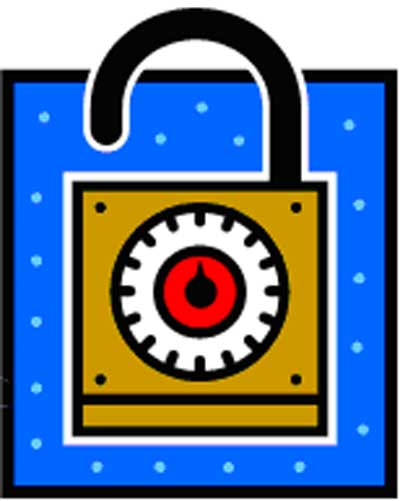While records show locks of one form or another were used in Egypt at least 4,000 years ago, progress in door locks went pretty much unnoticed by the common people who were satisfied with a latch string or just never bothered to lock their doors.
I remember a farmer saying he'd much rather have someone sneak in and steel something than bust his door in.
The latch string worked pretty well. It was tied to the latch which was on the inside and pushed through a hole an inch or so above the latch so that when it was pulled from the outside, it raised the latch so you could open the door.
If you felt like locking up at night, you pulled the string in. Now, we just lock the knob, engage the dead bolt, set the burglar alarm, turn on the security lighting and be sure the motion detector is activated. Much more impressive and perhaps even more effective than a latch string and a dog.
The early locks were made of wood and attached to the door post. They contained wooden pegs that dropped into holes in a portion of the door that acted as the "bolt." The key would have the right number of projections in the right places to raise the pegs and free the door.
This was the forerunner to our tumbler locks of today. While those first locks were no substitute for a moat full of hungry crocodiles and a draw bridge, you gotta start somewhere.
Go back a few hundred years prior to the first wooden locks and you have the Gordian Knotted rope. As legend has it, Gordius, King of Phrygia tied it in such an intricate way that no one else could untie it. However, it is said that when Alexander the Great failed in his attempt, he took out his trusty sword and cut it.

Around 870 AD English craftsmen designed all metal locks that required the key be shaped just right to fit into the lock and allow rotation.
Locksmiths have been around a lot longer than that farmer I was telling you about but mostly in Europe and Asia where they designed fancy locks for noblemen, the few people who had anything worth locking up.
As the locksmiths got trickier, so did the lock pickers and it was an ongoing challenge to design an unpickable lock. By the 18th century, the rich demanded burglar proof locks to protect their collections of expensive jewelry, paintings and golf clubs.
Those smart folks from China came up with "Puzzle" aka "combination" locks with 3 to 7 rings and soon after came the "dial" locks. Both types required a pattern of words or numbers known only to the owner.

The Eureka, a foolproof lock with five tumblers for bank vaults was used by the US Treasury Department. It was patented in 1862 by Dodds, MacNeal and Urban of Canton, Ohio. It used a combination of letters and numbers and offered 1,073,741,824 combinations. A bit like the lottery.
In Spain, they developed a great distrust of locks several centuries ago. Homeowners of an entire block would hire a watchman to patrol the neighborhood and carry all their keys. If they wanted to lock or unlock their door, they needed to summon the watchman, a trusted sole and there was no "hanky panky" or "messin' in Madrid" ...so they say.
Between 1774 and 1920, US lock makers had patented some 3,000 locking devices. Among the early American inventors were Linus Yale Sr., and Walter Schlage. The latter introduced the "button in the knob" concept in the early 1920s.
 All we had back on the farm were skeleton locks and keys. I think all the keys were the same in our house. I remember locking my bedroom door and leaving the key in the lock and turned just enough that my sister couldn't push it out from the other side and unlock the door with her key.
All we had back on the farm were skeleton locks and keys. I think all the keys were the same in our house. I remember locking my bedroom door and leaving the key in the lock and turned just enough that my sister couldn't push it out from the other side and unlock the door with her key.
You could look out through the keyhole and sometimes you'd see an eyeball lookin' in. I don't think we ever locked the outside doors unless it was when we went on vacation.
Some of the above information was learned from "Schlages History of Locks"
Well, it's getting late here in the East and about time to pull the string in.
G'night
Top of Page
Back to Ron Kitson Columns
Back to Memories of Cleveland Seniors